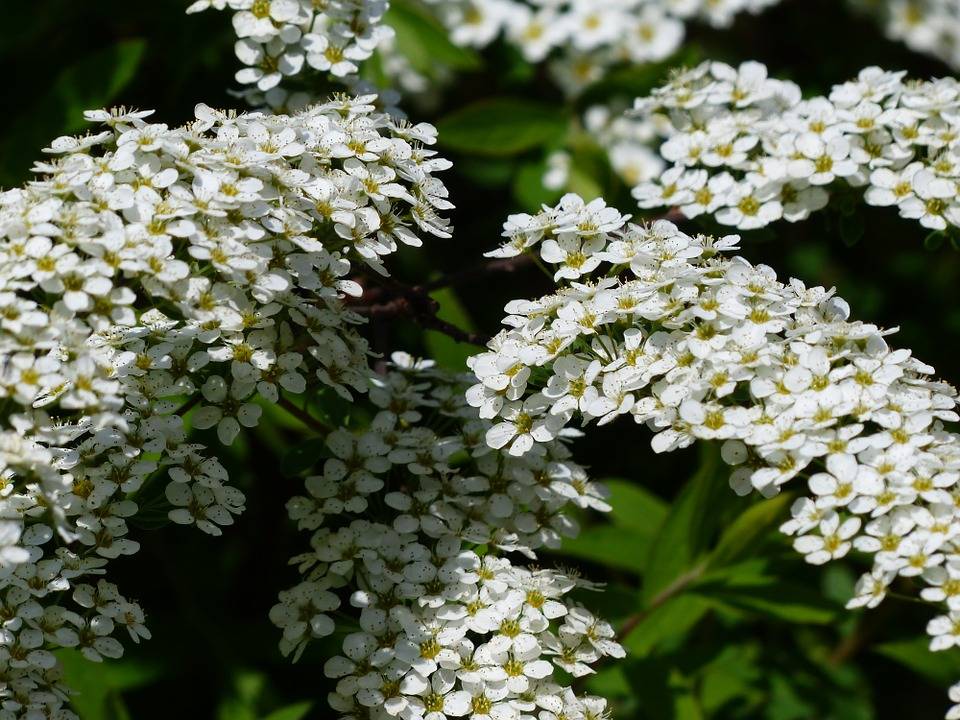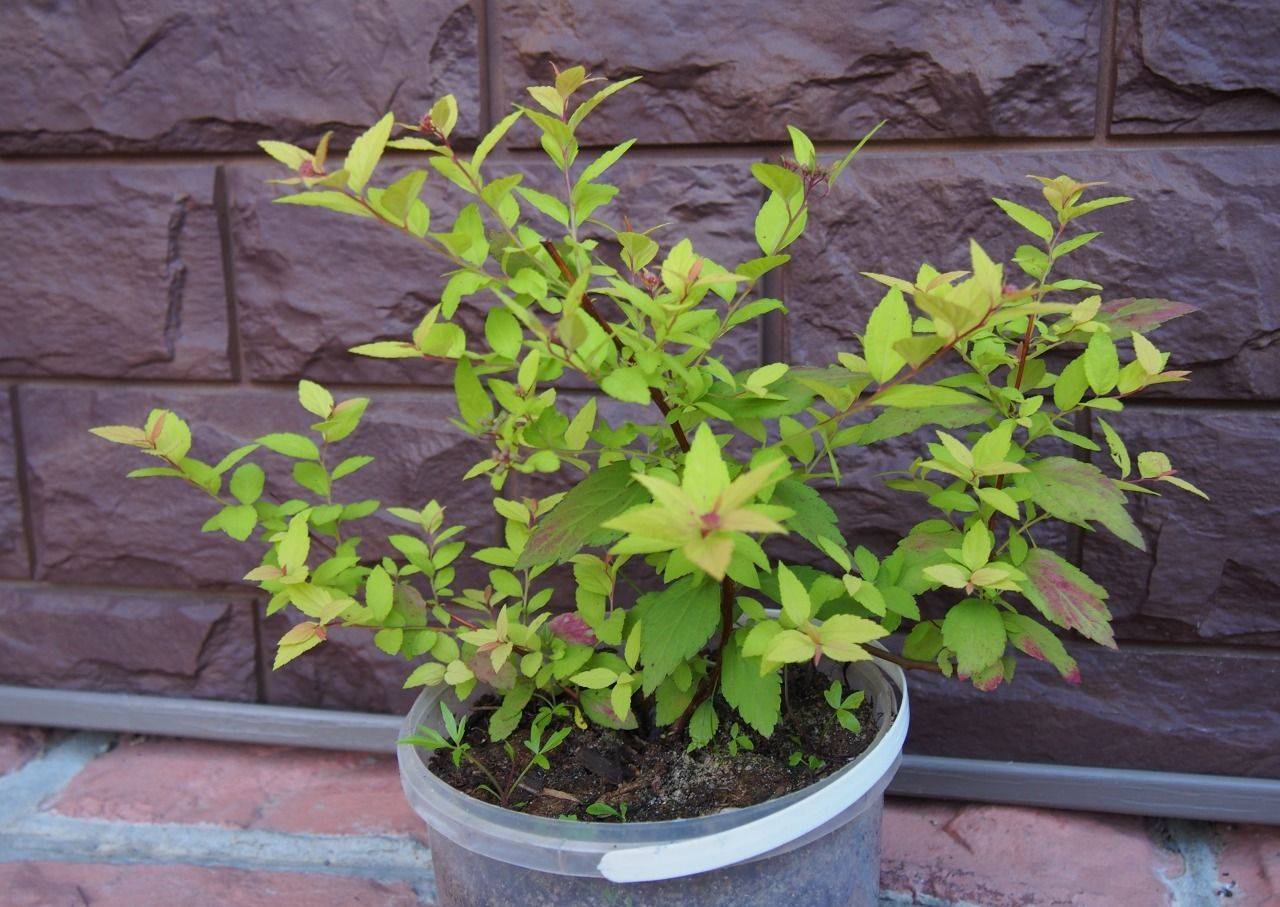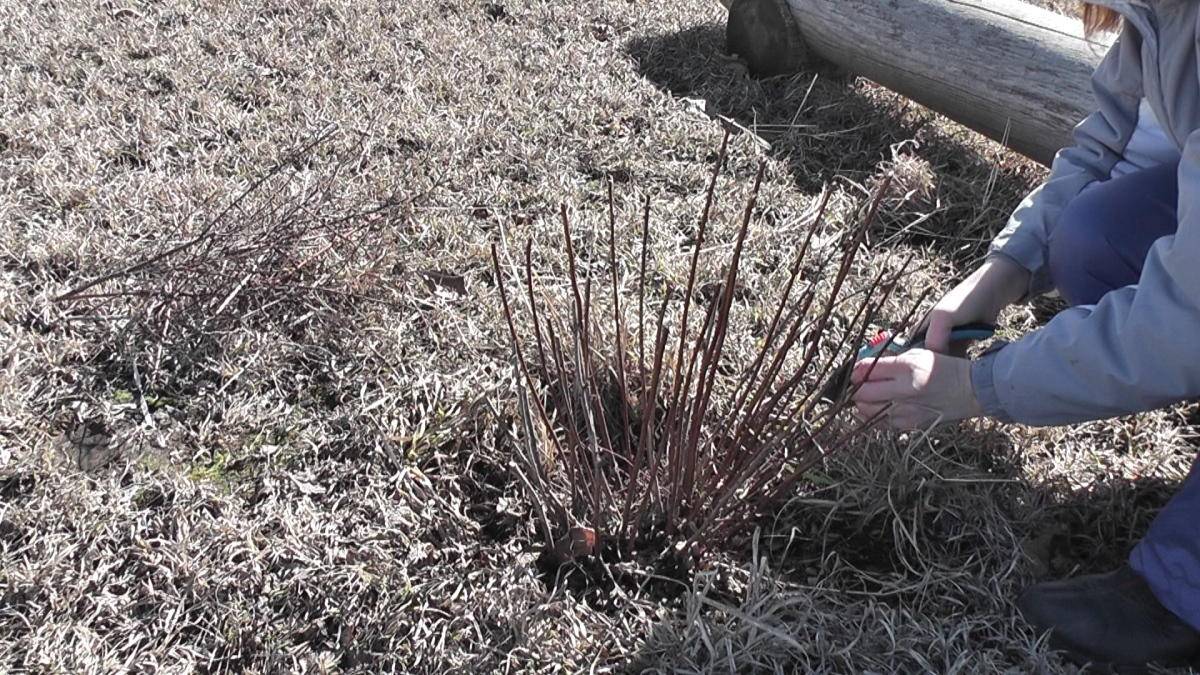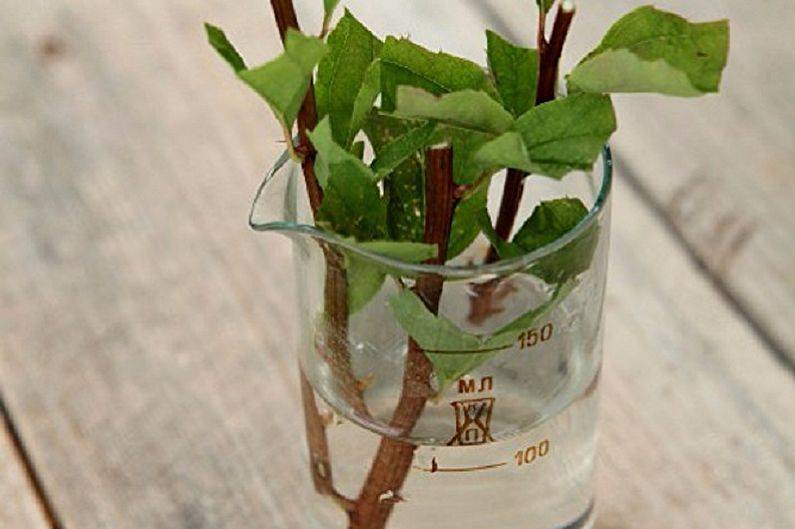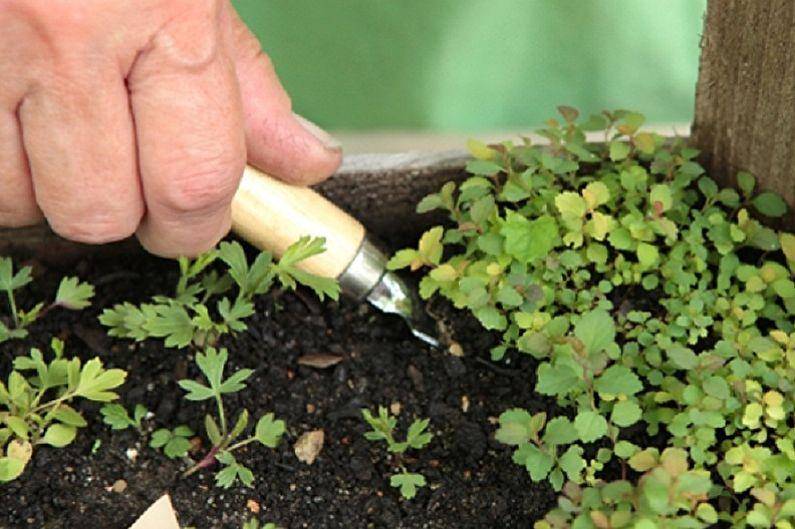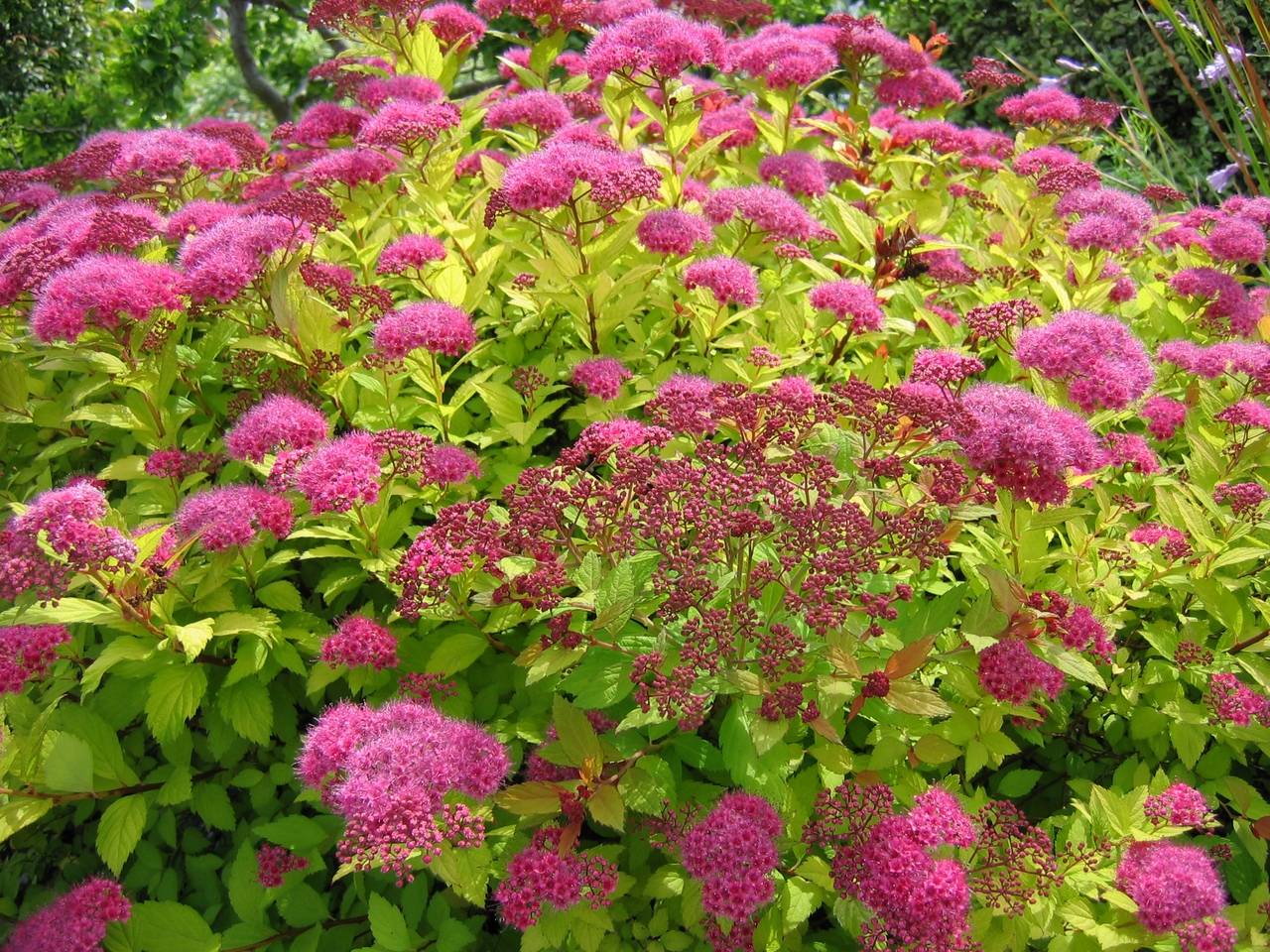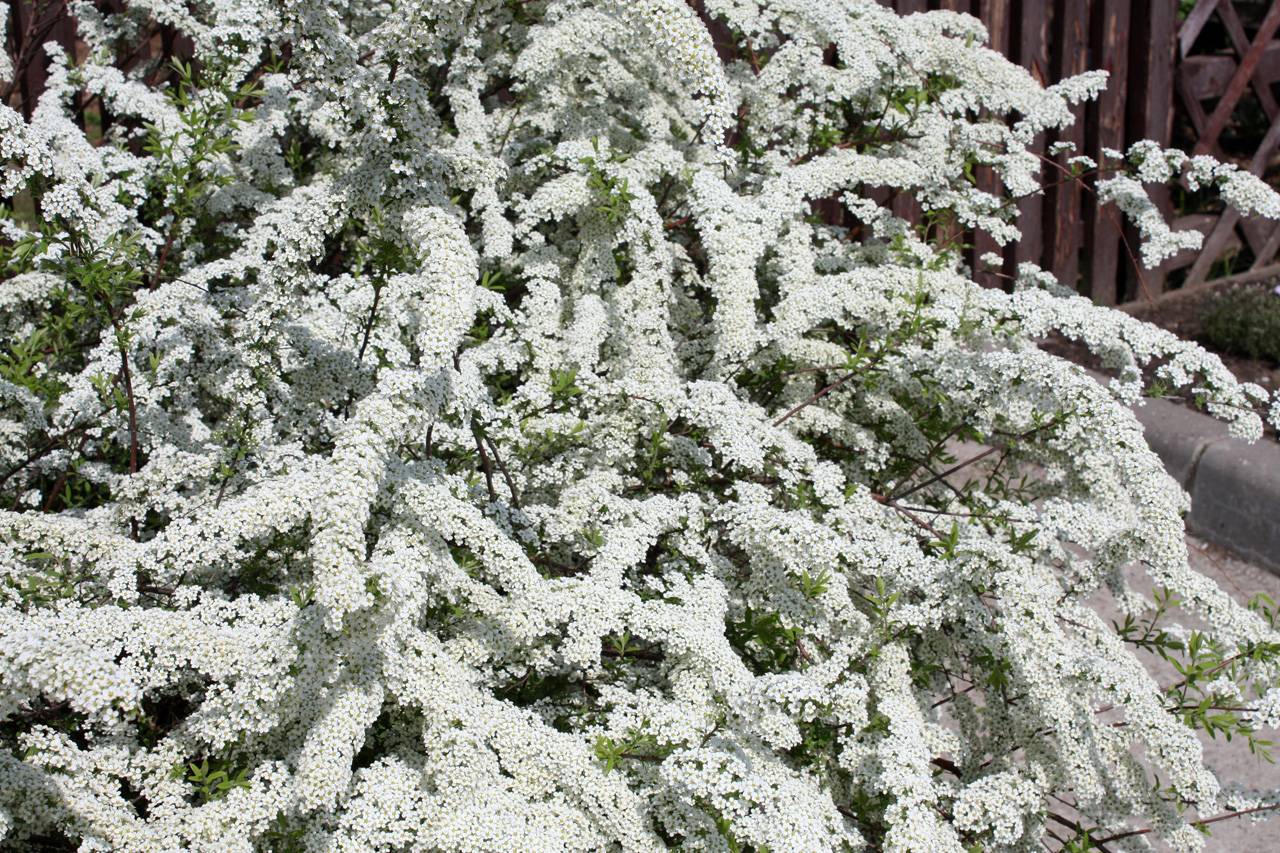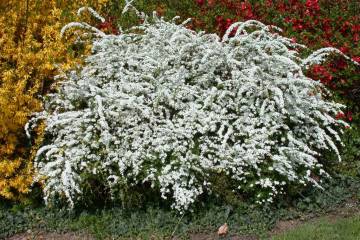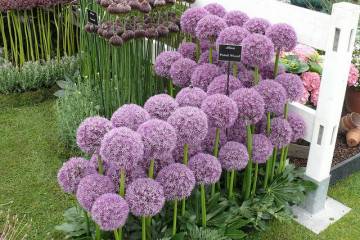Spirea - planting and care in the open field
Content:
Planting and caring for spirea - the "white bride" - in the open field almost does not depend on the variety. And only the region, or rather the frost resistance zone, makes its own adjustments to agricultural technology. A perennial shrub is considered very undemanding and viable, it is quite suitable for beginners. Spirea hedges are very popular.
Spirea - planting and care in the open field, cultivation features
In nurseries there are several dozen species of spirits - ornamental shrubs of various sizes, flowering periods, among which there are white-flowering ones and with pink petals. All of them grow well in almost any soil and are very unpretentious.
The choice of planting material
Several characteristic features will allow you to evaluate the quality of seedlings. When planting in spring, plants with an open root system are bought, in which the buds are in a dormant state. Such specimens will start growing immediately after planting. The height of the bush should not be more than 50 cm.
During the whole warm season, you can buy and immediately plant a spirea with a closed root system (in containers). The quality of the planting material is evidenced by a good turgor of shoots and leaves, the absence of suspicious spots and pests on them. Depending on the variety, the size of the bush can vary widely from 20 to 50 cm.
How and when to plant
It is believed that spring-blooming spireas (2-3-year-old seedlings) are best planted in the fall, then they will be able to bloom successfully next spring. Summer flowering varieties can be planted in both spring and fall. When planting in spring, the moment is chosen in late March - early April (according to the weather), and for autumn planting, September is best suited.
Soil preparation and site
A place for planting holes is chosen in sunny areas. In the shade, the bushes will grow, but their crown will not be dense, and flowering may not come at all. Compost is mixed into the existing soil, which will allow a couple of years after planting the seedlings not to apply any fertilizers.
What kind of soil does spirea like
With a general undemandingness to the composition of the soil, spirea prefers slightly acidic or neutral. Therefore, it is best to use shredded pine bark or peat for mulching. When planting, heavy soil is dug up and its aeration is improved by introducing vermiculite, coarse sand, and wood ash into it.
The nuances of growing in spring, autumn
When planting in spring, all the shoots of the seedling are shortened by a third. If a bush with an open root system and strong overdried, then it is necessary to cut off half the height of the shoots. A seedling with a closed root system is abundantly moistened, and then immediately planted.
Autumn in early September is a great time to propagate bushes.Dig up root shoots, cutting off from the main maternal roots. You need to transplant it to a new place immediately. If, in the spring, the bush did not take root well on the selected site, then it is in the fall that they dig it out after the fall of leaves and plant it in another place.
Features of cultivation in Siberia, the Urals, in the Moscow region
For these climatic zones, including the Leningrad region, spring-flowering varieties are good: Vangutta, Greifshame, willow, oak-leaved, Japanese.
The nuances of leaving are in preparation for wintering. Low-growing shrubs do not need to be covered, they winter well under the snow. Growing spirea - in the Urals, growing it requires taking measures after leaf fall. The branches are bent to the ground and covered, removing the cover only after the soil thaws in the spring.
Shrub propagation
The choice of reproduction method depends on what kind of spirea is in question. So, any variety can be propagated by cuttings, but it is impossible to plant hybrids with seeds.
Cuttings
This method has an important advantage: young plants retain 100% all parental characteristics. In the fall, the lignified shoots of this year, directed upwards, are cut off. On each cutting, at least 5 leaves are left, and the lower ones are pinched off, and the upper ones are shortened in half.
The cuttings should be kept in a growth stimulant solution for about 10 hours. Then each lower end is dipped into Kornevin and planted in wet sand at a slight angle. The container with cuttings is left in a shaded place and regularly watered until frost. A week before the final cold snap, the cuttings are planted in the ground and covered. The strongest specimens with good growth should be planted in a permanent place a year later in the fall.
How to grow spirea with seeds
This technique has an undoubted advantage - for 1 sowing, you can get a lot of young plants. The seed pods are cut from the branches a little unripe, and kept in a dry, dark place for about 2 weeks.
The spilled seeds can be sown in the same fall or next spring. In 2 months, the seedlings should reach a height of 2 cm, after which they are dived. Autumn seedlings are planted in open ground in spring, and spring ones - in the same fall.
Outdoor care for spirea
Almost all varieties have the same needs, so the agricultural technology is the same for them. That is why a shrub is bought based on its appearance, having an idea of how to take care of spirea.
How to water properly
Only the youngest seedlings can dry leaves and shoots with a lack of moisture, therefore, in the first year, in a dry summer, the bushes are watered. Adult specimens are watered with prolonged, more than 2 weeks, drought. The most moisture-loving is the Japanese spirea, for example, the Little Princess variety - Little Princess, so it is planted in those areas where it often rains in the summer.
Fertilization and feeding
In the garden, the spirea is fed three times a year, starting from the second year after planting. If you follow this rule, then the bushes will always bloom very luxuriantly.
Fertilizers are applied in the following order:
- In the spring. Nitrogen fertilization is performed after pruning the shrub. It cannot be brought in in autumn, since its purpose is to stimulate the rapid growth of green mass.
- In summer. Mineral preparations, for example, superphosphate, alternate with organic dressings - humate, mullein, humus.
- In the autumn. Phosphorus-potassium fertilizer is applied 3 weeks before frost to prepare the roots for wintering.
How to feed spirea
Top dressing is divided into mineral and organic. Great for spirea manure. It is diluted with water in a 1: 5 ratio.
Superphosphate granules can be scattered over the surface of the soil under the bushes. Usually, at a time, 5-10 g of fertilizer is used per plant. Nitrogen fertilization can be applied in the form of ammonium nitrate, which is diluted with water in the proportion: 30-40 g of fertilizer per 10 liters of water.
How to make a spirea hedge
All varieties can be divided into short and tall. From a spirea up to 1 m high (birch-leaved, Japanese), dense low hedges are obtained, allowing you to zone the territory. Higher grades are good for producing dense, impenetrable fences along the boundaries of the site.
To get the desired result as soon as possible, seedlings 3-4 years old are planted in rows according to a pre-planned scheme in spring or autumn. The rules are adhered to: the distance between the bushes is slightly less than their maximum height. In the future, the density is increased by cutting, stimulating branching of the shoots.
Spirea care after flowering
Early flowering varieties need a haircut immediately after the wilting of all inflorescences. This usually happens in the middle of summer, but you can postpone the event until autumn, when, after the leaves have fallen, the skeleton of the bush is seen more clearly.
You need to shape the crown carefully. By the fall, flower buds have already been laid on the shoots of this year, so they can be trimmed no more than a third of the length. In this way, they enhance tillering and stimulate the abundance of flowering.
In gray spirea, pruning and formation are carried out more radically, their crown shoots are shortened by half, and the old lower branches by a third. That is why it is important to know the variety of the bush in order to know how to cut the spirea correctly and not harm its decorative effect.
When to cut spirea
In almost all varieties of meadowsweet branches are short-lived. In the third year of life, they already begin to dry out. During this time, they become a haven for pests, as well as a breeding ground for fungal diseases. In regions with frosty winters, annual shoots often freeze slightly. If you want to grow this ornamental shrub on the site for many years, you should know the basic rules of how to properly cut the spirea.
Spring care for spirea - pruning, shaping
The varieties blooming in spring are pruned, removing too old shoots, dry twigs, and this can be done almost immediately after flowering. Varieties blooming in summer from the 4th year of life are pruned in the spring, and they are removed a lot at a time. In these varieties, old branches tend to lean towards the ground itself, thereby spoiling the appearance of the meadowsweet.
Pruning a third of the length of the shoots in the summer will cause the remaining crown to branch out. Thinning every 2-3 years will allow sunlight to penetrate deep into the bush, which will definitely have a positive effect on its health.
Rejuvenating pruning is performed every 7-10 years, removing almost the entire crown and leaving only a few of the strongest and youngest branches.
How to care for spirea in preparation for winter
In the first 1-2 years after planting, the bushes are almost not cut off, as the crown is forming. But adult specimens need systematic pruning. In autumn, the unripe part of the shoots is trimmed to the first bud above the lignified part.Anything that creates excessive thickening is removed inside the crown, since in the absence of good ventilation, fungal diseases will inevitably appear.
Stimulating pruning is performed after leaf fall, but before the first frost.
The deepest autumn pruning is carried out on bushes over 15-20 years old. The same is done with specimens severely affected by pests or diseases. The shrub is shortened almost to the very ground, leaving several shoots no more than 10 cm high.
An autumn haircut is also needed for hedges. This increases the chances of a successful wintering, and also saves time in the spring, when there is already a lot of work in the garden. The deadline for an autumn haircut is the first half of October. If we are talking about bushes with long drooping shoots in the northern regions, then after shortening them, they are bent to the ground and covered with an agricultural canopy or spruce branches.
Plant diseases and pests
The following pests can cause the greatest damage to plantings:
- Aphids - they are treated with "Aktellik", "Kronefos" from it in summer until mid-August.
- Spider mite - helps "Phosphamide", "Keltan", which are sprayed on shrubs from July to August.
- Tavolga Sawer. Whitefly, rose leafworm - they are sprayed with "Fitoverm" as needed in the summer months.
Spirea suffers from fungal diseases, which attack old bushes especially strongly in cool, damp weather. For preventive purposes, in the spring, the garden is sprayed with a solution of Bordeaux liquid in the spring, and in the summer, the treatment with "Fitosporin" is repeated.
Numerous varieties of spirea are a real highlight of any garden. It is planted closer to the fence, so that, at the entrance to the house, you can admire the gentle and very abundant flowering of white or pink in spring or all summer.
